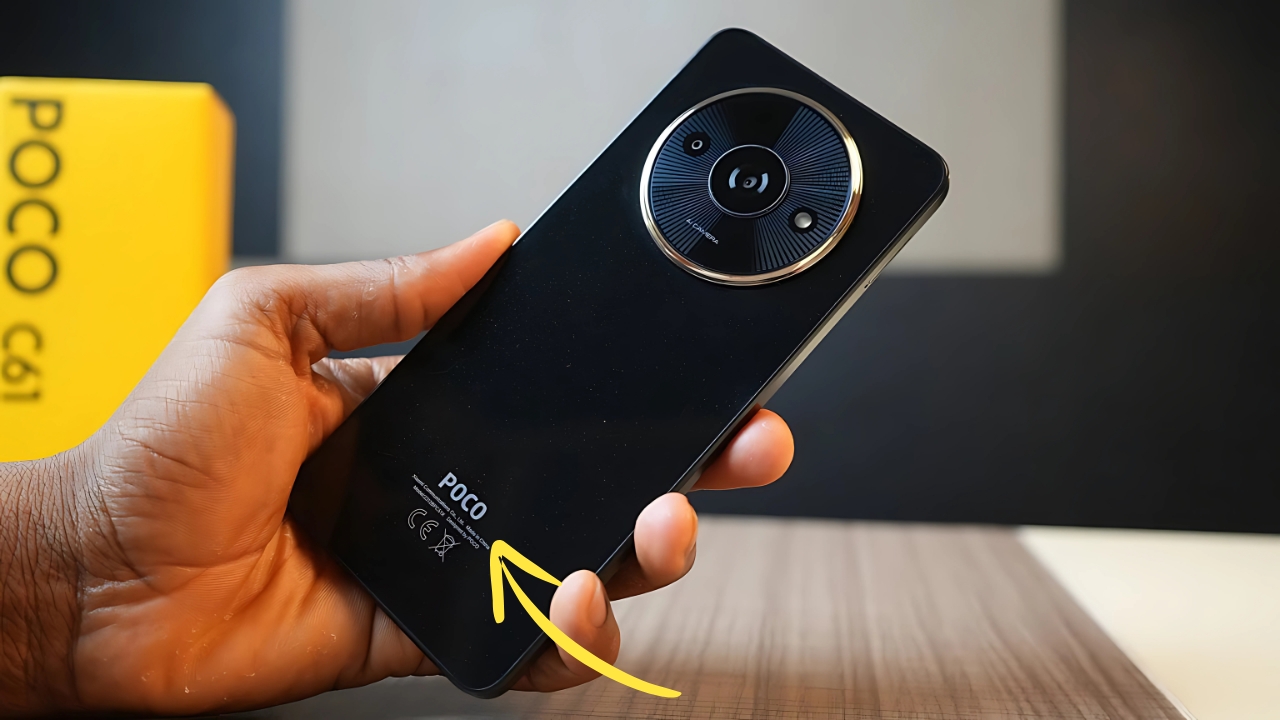Poco C61: The entry-level smartphone segment has historically been defined by significant compromises – underwhelming displays, stuttering performance, and cameras that struggle in anything but perfect lighting.
Yet this category remains crucial, particularly in emerging markets where price sensitivity directly impacts digital inclusion.
The Poco C61 represents a particularly interesting approach to this challenge, attempting to deliver a more complete experience at the ₹7,499 ($90) price point than conventional wisdom might suggest possible.
Having used this device as a secondary phone for the past two weeks, I’ve developed distinct impressions about where it succeeds and where limitations remain unavoidable at this price tier.
Poco C61: Market Context: Understanding the C61’s Mission
To properly evaluate the C61, one must first understand its positioning within both Poco’s expanding portfolio and the broader smartphone ecosystem.
As Xiaomi’s value-focused sub-brand, Poco has established a reputation for aggressive pricing across multiple segments, with the C-series representing their most accessible entry point.
The C61 targets first-time smartphone buyers transitioning from feature phones, young users receiving their first device, and budget-conscious consumers seeking a basic secondary handset.
This positioning creates specific expectations around durability, ease of use, and essential functionality rather than cutting-edge specifications or premium materials.
Design Approach: Practical Aesthetics
The C61 makes no pretense of premium materials, embracing polycarbonate construction while incorporating design elements that enhance both appearance and functionality.
The “Forest Green” variant I tested features a textured back panel with a subtle geometric pattern that both adds visual interest and provides improved grip compared to the smooth plastic common at this price point.
This texture also effectively resists fingerprints – a practical consideration often overlooked in budget devices.
At 8.3mm thick and weighing 176 grams, the device strikes a reasonable balance between substantiality and comfort.
The frame incorporates slightly rounded edges that improve hand-feel during extended use, while the side-mounted fingerprint sensor doubles as the power button, offering surprisingly responsive authentication for this price category.
The front design embraces contemporary aesthetics with a waterdrop notch housing the selfie camera and relatively slim bezels for an entry-level device, though the more pronounced chin serves as a reminder of the budget positioning.
The flat display with rounded corners enhances usability, particularly when typing near screen edges.
Display Experience: Meaningful Basics
The 6.71-inch LCD panel represents one of the device’s more significant value propositions. While LCD technology remains standard at this price point, Poco has selected a higher-quality implementation than typically found in the segment.
The HD+ resolution (1650 × 720) provides adequate sharpness for most content, though close inspection reveals expected pixelation compared to higher-resolution displays.
Maximum brightness reaches approximately 500 nits, sufficient for indoor visibility though challenging under direct sunlight. Color reproduction exceeds expectations in “Standard” mode, avoiding the excessive saturation sometimes used to mask lower-quality panels.
The 90Hz refresh rate – uncommon at this price point – provides noticeably smoother scrolling and interface navigation than the 60Hz displays still standard in many entry-level devices.
The inclusion of Widevine L1 certification enables HD streaming across supported services, while the reasonably sized bezels create an immersive viewing experience for media consumption.
These elements combine to deliver a display experience that, while not competing with higher-priced alternatives, exceeds what the price point would traditionally suggest possible.
Performance Dynamics: Essential Capability
Powered by MediaTek’s Helio G85 processor, the C61 utilizes a chipset positioned for basic gaming capability while prioritizing efficiency.
The 4GB/64GB configuration in my review unit provided adequate multitasking headroom for typical entry-level usage patterns, with the option to expand storage via microSD.
In practical terms, the device handles messaging, social media browsing, video consumption, and light productivity without significant hesitation.
Apps launch with acceptable speed, system navigation maintains reasonable fluidity thanks to the 90Hz display, and switching between recently used applications occurs without disruptive reloads when staying within modest multitasking boundaries.
Gaming capabilities reflect the device’s entry-level positioning but exceed what some might expect. Casual titles run without issue, while even moderately demanding games like PUBG Mobile remain playable at reduced settings – providing accessible entertainment without the premium typically associated with “gaming phones.”
The 5000mAh battery represents another area where the C61 delivers tangible value, consistently providing full-day endurance even under heavy usage patterns.
More conservative users could potentially extend this to two days, offering meaningful flexibility during travel or other situations where charging opportunities may be limited.
The included 10W charger requires approximately 2.5 hours for a full charge – unremarkable but acceptable given the price positioning.
Camera Capabilities: Contextual Competence
The camera system combines a 50MP primary sensor with an unspecified secondary lens for depth sensing. Rather than engaging in specification battles with multiple low-quality lenses, Poco has focused resources on optimizing the main shooting experience – a sensible approach at this price point.
In favorable lighting, the primary camera captures surprisingly detailed images with natural color reproduction that avoids the excessive processing often found in budget devices.
Dynamic range proves adequate for most scenes, though challenging lighting predictably produces either blown highlights or crushed shadows. The inclusion of AI scene recognition generally improves results, particularly for landscapes and food photography.
Low-light performance reveals expected limitations, with noticeable noise and detail loss in challenging conditions.
The night mode improves matters somewhat, though results remain basic compared to devices costing several times more – an unavoidable reality at this price point.
Portrait mode creates reasonably convincing background blur despite relying primarily on software algorithms rather than sophisticated depth mapping.
The 5MP front-facing camera delivers acceptable selfies in good lighting, adequate for social media sharing though lacking the detail of higher-resolution implementations.
Software Experience: Streamlined Approach
HyperOS, based on Android 14, represents Xiaomi’s evolving approach to smartphone software. The C61 benefits from a streamlined implementation focused on efficiency rather than feature overload – appropriate given the hardware constraints.
The interface offers basic personalization options without overwhelming complexity, while animations appear adequately fluid thanks to the 90Hz display.
Bloatware has been noticeably reduced compared to previous budget Xiaomi devices, though some pre-installed applications remain.
The system optimization for lower-powered hardware demonstrates thoughtful consideration, with background process management that maintains reasonable performance without aggressive application killing that disrupts functionality.
Poco C61: Redefined Essentials
The Poco C61 ultimately succeeds by challenging conventional expectations about necessary compromises at its price point.
Rather than attempting to include every possible feature or match higher-priced alternatives, it delivers a balanced experience that emphasizes display quality, battery endurance, and essential performance – elements that impact satisfaction throughout the ownership cycle.
For consumers with modest smartphone requirements or tight budget constraints, the C61 offers a compelling proposition that focuses on practical adequacy across core functions rather than excelling in isolated aspects or including gimmicky features of questionable utility.
In redefining what constitutes “essential” smartphone experiences at the entry level, Poco has created a device that enhances digital accessibility without imposing financial strain.










